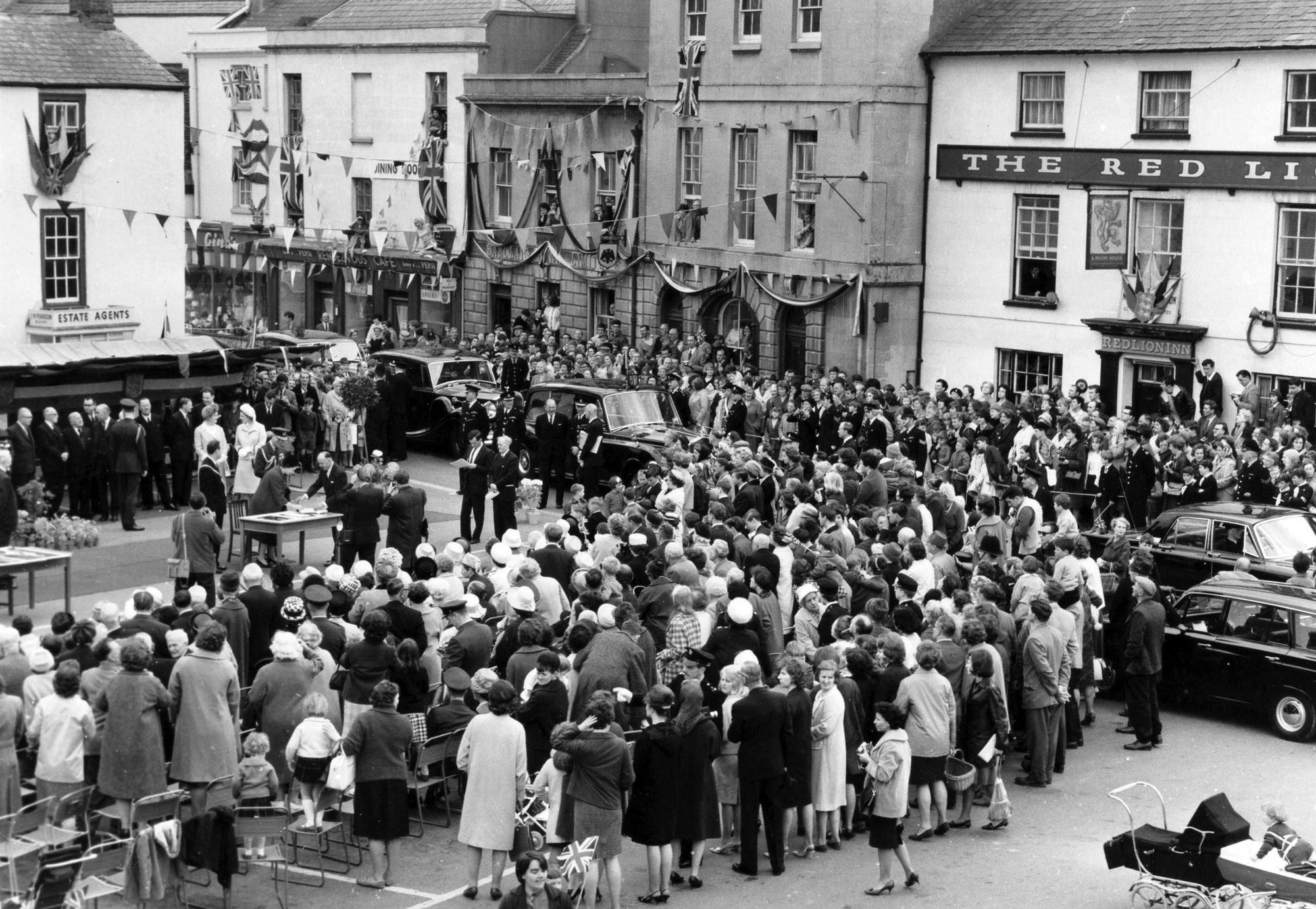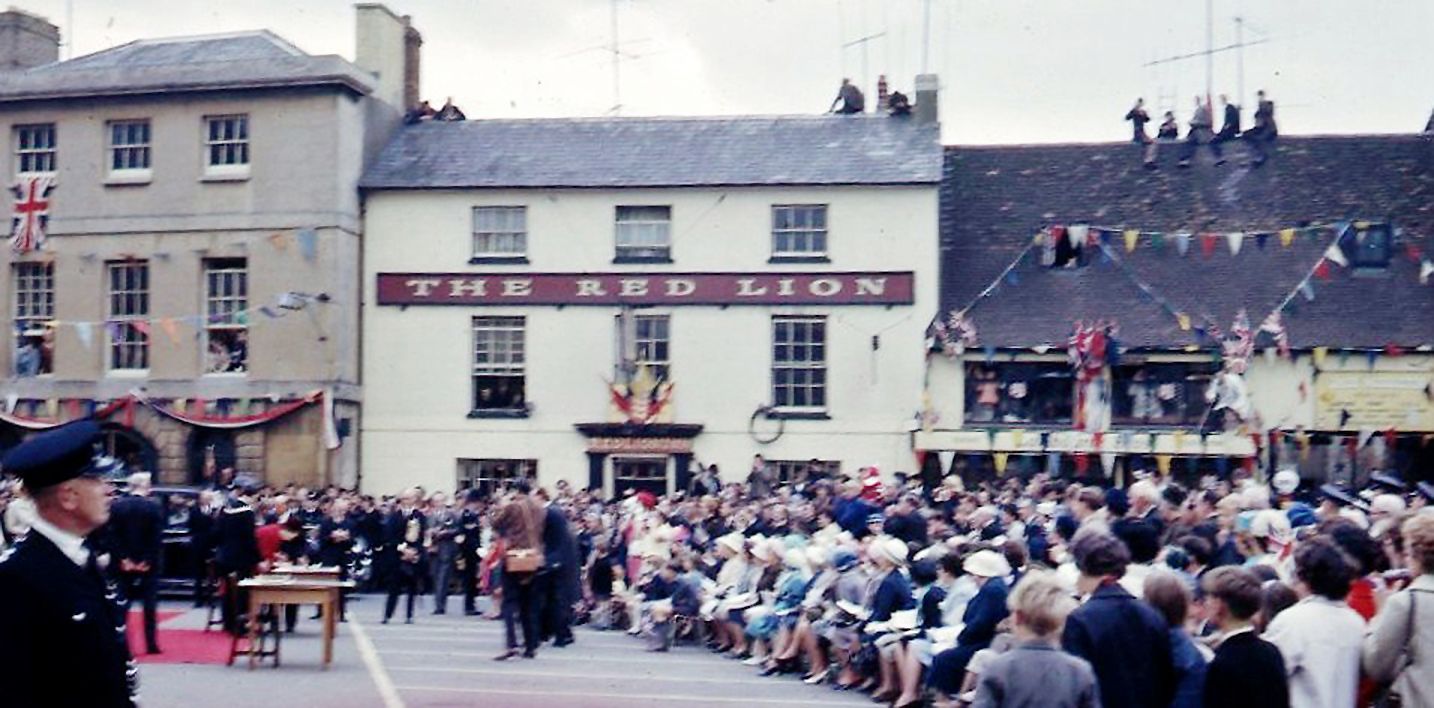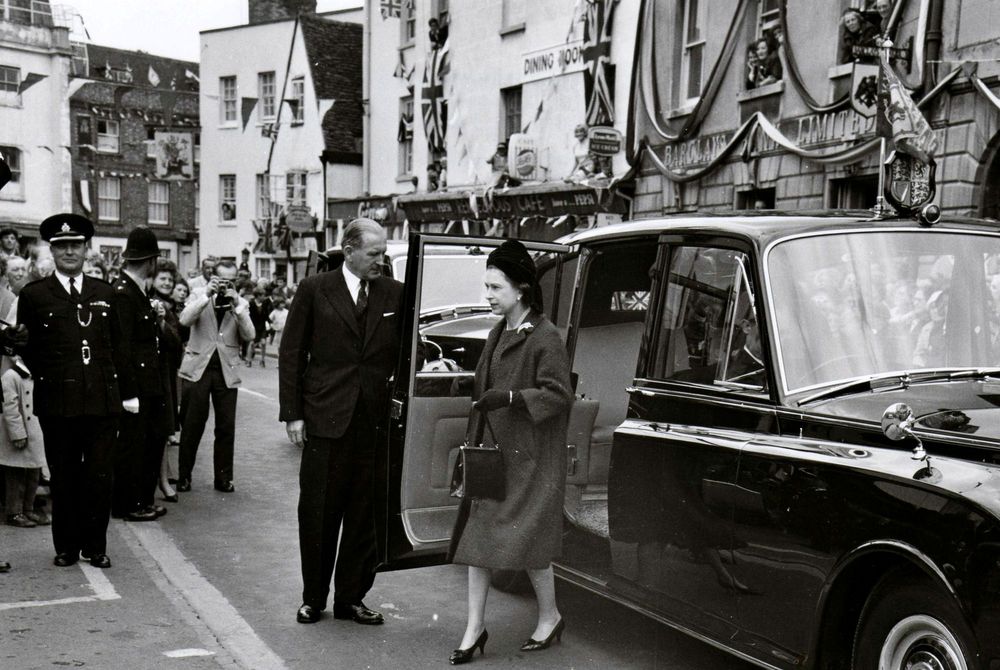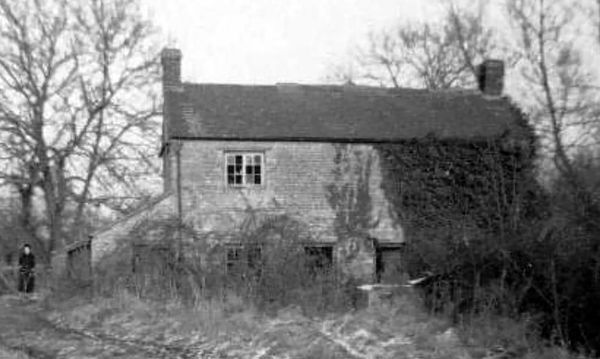First Visit of a Reigning Monarch
On Monday 10th May 1965 people came from miles around and gathered for hours in the town centre, waiting for the visit of Her Majesty, Queen Elizabeth II, and His Royal Highness, Prince Philip. The first time on record when a reigning monarch had officially visited the town.
Glorious sunshine glinting on the gay decorations transformed the Market Square into a fairyland of anticipation and splendour. As the royal party arrived the huge crowd surged forward, flag- waving and cheering. Windows above ground level were packed as people bunched tightly together, eager to get a gallery view.

The weeks of planning and preparation for the visit were justly rewarded. The town was gaily festooned with flags and bunting and local shops were resplendent in their red, white and blue decorations. Bicester took the day off. It was a day to be proud of, a day to be remembered.
The visit started at Bicester Central Ordnance Depot where, at 11am, the Queen received the Royal Salute from the Guard of Honour mounted by the 46 Bn. RAOC. Then, riding in an open Land Rover, the Queen was given a tour of the depot which was undergoing a £2.5m redevelopment. They then proceeded through Ambrosden, where the roads were lined by military families and schoolchildren, and on to Graven Hill, where displays of service clothing, fire fighting equipment and air drop equipment where exhibited. Prince Philip closely inspected the 20lbs of metal left from guns used in the Crimea War which is now used for the manufacture of the Victoria Cross. Then the depot visit ended with a stop at the Officers’ Mess.
The royal car arrived at the Market Square a few minutes later than expected. It had been previously announced that the Queen and Prince Philip would not have time to speak with the councillors who were presented, but to the delight of the huge crowd the time schedule went by the wayside and the Royal Visitors chatted and joked with fifty councillors and senior officers. Prince Philip made another of his light- hearted comments, to ease the strain of the long line of handshakes, when he asked Councillor Mears, a railway engine driver, what happened to the tea making since the changeover from steam to diesel?

The Queen and Prince Philip then signed portraits, which were to be hung in the council chambers of Bicester and Ploughley Councils. They also signed the visitors’ books for both councils.
The final stage of the royal visit was lunch at RAF Bicester. Leaving the Market Square the royal car drove slowly along Sheep Street and St John’s Street, where the gathered crowd of schoolchildren from Bicester and other areas waved their Union Jacks and cheered as the royal party drove by.
The pen used by the Queen to sign her portrait for Bicester Urban District Council was presented to the town by Mr F.T.J. Hudson JP, Chairman of the Bicester Magistrates. Prince Philip used his own pen on the occasion, remarking that he did not like using any other.



